The Milan Four: Lorenza Luti from Kartell
Texte par Simon Keane-Cowell
Zürich, Suisse
08.06.11
In the third of our series of interviews from this year's Milan Furniture Fair with some of the creative industries' leading figures, we meet Lorenza Luti, marketing and retail director of established Italian brand Kartell, which, after 50 years in business, continues to innovate in the use of its signature material – plastic.
Let's face it. Plastic hasn't always fared too well in the PR stakes. The 2009 documentary film 'Plastic Planet' by Austrian director Werner Boote, for example, which examines how the ubiquity of this 20th-century wonder material might be posing a serious threat to the eco-system, hasn't helped matters. But even before this, what was once celebrated as the stuff of the future – the stuff that would, indeed, help shape the material landscape of the future – at some point lost its sheen.
Big statements at this year's Milan Salone Internazionale del Mobile: Kartell's stand plays to one of the company's key strengths – its impressive collection

Big statements at this year's Milan Salone Internazionale del Mobile: Kartell's stand plays to one of the company's key strengths – its impressive collection
×A victim of its own success, plastic's ability to lend form to the most mundane of everyday objects saw it take on a series of negative connotations: cheap, fast, poor-quality. You know things are really bad, however, when a word acquires a rather unflattering metaphoric value: think 'plastic face' for cosmetic surgery gone wrong or (my personal favourite) 'plastic paddy' for a zealous American visiting Ireland, hungry to discover his or her Irish 'roots'.
It's all the more remarkable, therefore, that one company has managed, contrary to the general and gradual devaluation of plastic as a material for manufacturing, to produce objects that declare themselves considered, high-end design pieces. 'The aim of the last 20 years was to make plastic a rich material, which it wasn't before,' explains Lorenza Luti, marketing and retail director of Kartell, the respected Italian brand whose name has become synonymous with plastic's innovative usage.
Marketing and retail director, Lorenza Luti: 'The heart of the company has never changed... Combining plastic materials with good design, but using industrial production. These three things are key when talking about the soul and success of Kartell.'
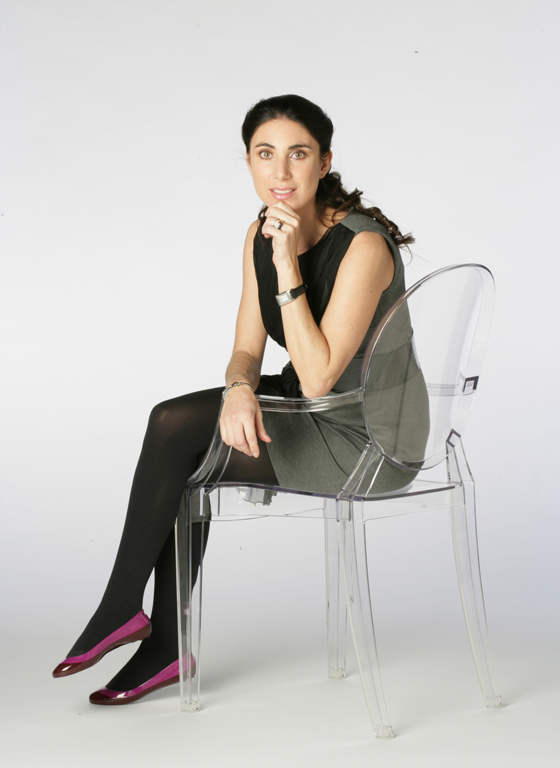
Marketing and retail director, Lorenza Luti: 'The heart of the company has never changed... Combining plastic materials with good design, but using industrial production. These three things are key when talking about the soul and success of Kartell.'
×Kartell celebrates its 50th anniversary this year, and, visiting its Ferruccio Laviani-designed, chromatically crazy stand at the Milan Furniture Fair in April, it was clear what at least one of the pillars of its success is – its remarkable collection. From Anna Castelli Ferrieri's iconic 'Componibili' storage system, first launched in those plastic-drenched, pre-Oil-Crisis late 1960s, to Tokujin Yoshioka's recent transparent-plastic chair from the 'Invisibles Collection', Kartell makes highly polished products that are anything but quick and dirty.
Luti speaks with a genuine eagerness when discussing where Kartell has come from and where it's going. Given that it's a family affair – her father, Claudio Luti, is the company's CEO – this comes as little surprise. With the brand placing an ever-increasing emphasis on retail (it has over 120 stores internationally, not to mention its specialist retailers), it's clear that the scale of Kartell's commercial ambition is a long way off from being realised, something that comes across in the aspirational tone of Luti's responses during Architonic's interview with her at this year's Salone del Mobile.
I started by congratulating her on Kartell's half century...
Kartell's stand at the 2011 Milan Furniture Fair was designed, as it has been for the last few years, by Ferruccio Laviani, whose 'Bourgie' lamp for the Italian brand could be described, justifiably, as a contemporary classic
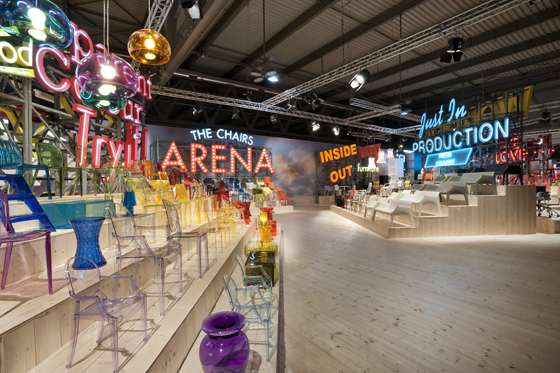
Kartell's stand at the 2011 Milan Furniture Fair was designed, as it has been for the last few years, by Ferruccio Laviani, whose 'Bourgie' lamp for the Italian brand could be described, justifiably, as a contemporary classic
×….
Happy birthday, first of all. Not to you, of course, but to the company. 50 years. How did we get to this point. To what do you attribute the success of the company?
I think it's because the heart of the company has never changed. The real revolution from the start was to introduce plastic materials into everyday objects. Combining plastic materials with good design from the start, but using industrial production. These three things are key when talking about the soul and success of Kartell. Over our 50 years, we've managed to do a lot new things – revolutions in the materials – while keeping our heart the same. We've never lost our three focal points throughout the history of our company.
A metaphor for Kartell's overall mission to make plastic a high-end material: originally issued in wood, Joe Colombo's 1960s '4801' armchair is reincarnated, this time in highly polished thermoplastic
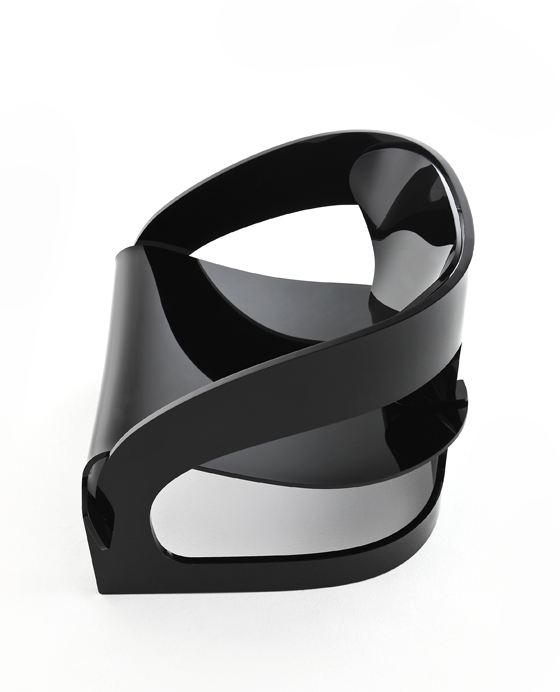
A metaphor for Kartell's overall mission to make plastic a high-end material: originally issued in wood, Joe Colombo's 1960s '4801' armchair is reincarnated, this time in highly polished thermoplastic
×Kartell is almost synonymous with a certain group of materials – plastics. How does the company add value to the products it manufactures, differentiating them from cheap plastic products?
The aim of the last 20 years was to make plastic a rich material, which it wasn't before. Working on many different aspects, including the surfaces – we work a lot on these. The recent tables by Tokujin Yoshioka, part of the 'Invisibles Collection', involved a lot of work on the transparent plastic, because usually plastic scratches. The idea was to find a transparent plastic that was as close as possible to glass. So it has the same effect, but is plastic, so it's much easier and cheaper. We tried to push as much as possible, to take on the challenge. It's a revolution in terms of function, materials and technology. It's about making a product that's advanced, that no one has done before.
A marriage made in product heaven: master of transparency Tokujin Yoshioka has designed a series of visually minimal pieces for Kartell's 'Invisibles Collection', including this armchair
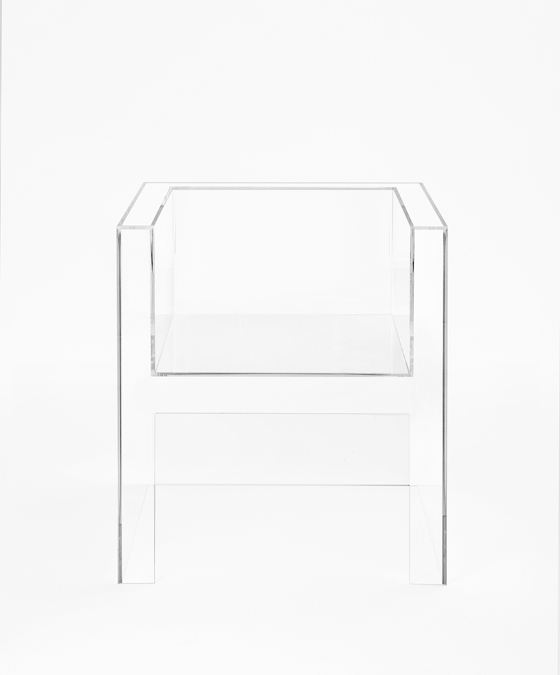
A marriage made in product heaven: master of transparency Tokujin Yoshioka has designed a series of visually minimal pieces for Kartell's 'Invisibles Collection', including this armchair
×Working in plastics, there's also the issue of sustainability. How does Kartell address this?
If you use a very high-quality plastic, like polycarbonate, it's nearly 99% recyclable. The important thing is to use a very pure type of plastic. The other thing that nobody talks about is that there is no wastage in the manufacturing process. All the materials used end up forming part of the chair, for example. There is no gas released, there's no dirty water. The process is a very clean. If you look where we produce our chairs, it's like a hospital. You have these big machines, into which you put the materials, and out comes a chair. If the chair's not good, you cut it up and use it again.
What about sustainability in terms of product longevity?
Well, these are products with a long life. We have bestsellers from the 1960s that are still in production and are still in use in people's houses. Our approach is to make products that are a bit fashionable, but whose value isn't over in just six months. This is a real plus with our designs. A collection that is bought on impulse sometimes – maybe a lamp that they see in one of our windows – but that is then kept for a lifetime.
Product icon of those plastic-loving, pre-Oil-Crisis late 1960s: Anna Castelli Ferrieri's long-selling 'Componibili' modular storage system

Product icon of those plastic-loving, pre-Oil-Crisis late 1960s: Anna Castelli Ferrieri's long-selling 'Componibili' modular storage system
×Does the notion of longsellers apply to all of your product areas?
Yes. It works across everything. We don't work on products that are just going to be around for a couple of years. Another example is our fashion collection. The shoes we make, we will make forever. The first collection is still in production. We just add to it, in terms of colours, for example.
How do you decide which designers to work with? What determines who you collaborate with?
We really start with relationships. Sometimes we talk with designers for years before starting on a product, because it's really a feeling between my father [Claudio Luti] and the designers. They have to understand each other. Designers have to understand the company, that we work on industrial products that have to sell. We work with fantastic materials that can be changed to go in different directions, but they have to understand them to work with them. What my father likes is to have a team that doesn't do one-off collaborations, but, rather, if a designer joins our team he stays in it. That doesn't mean each designer is respsonsible for a new product every year. We work day by day. This is the aim of Kartell, to have a team that works continually on new challenges.
Japanese studio Nendo's new 'Sundial' bookcase for Kartell, whose variously angled vertical dividers play with light and shadow
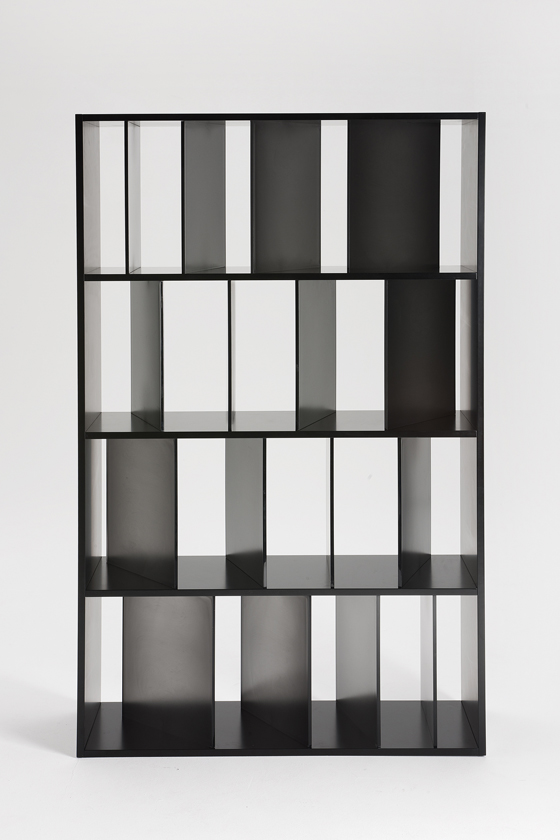
Japanese studio Nendo's new 'Sundial' bookcase for Kartell, whose variously angled vertical dividers play with light and shadow
×Is there a particular product from the whole Kartell collection that you would say epitomises the company's ethos, or one that you have a strong personal connection with?
The collection as a whole is very beautiful and every object has a history. Personally, over the last ten years, I've lived through the evolution of our transparent plastic. In 1999, Kartell introduced polycarbonate into the furniture industry and we were the first to make the first transparent chair, 'La Marie' [designed by Philippe Starck], and so I experienced the evolution of this material and also the functions that we covered with the objects. So, I particularly love polycarbonate, the idea of having transparent objects in the house, that can be placed into any kind of style or environment.
Then and now: Ferruccio Laviani's highly successful 'Bourgie' lamp for Kartell, which combines 18th-century formal references with 21st-century manufacturing technology
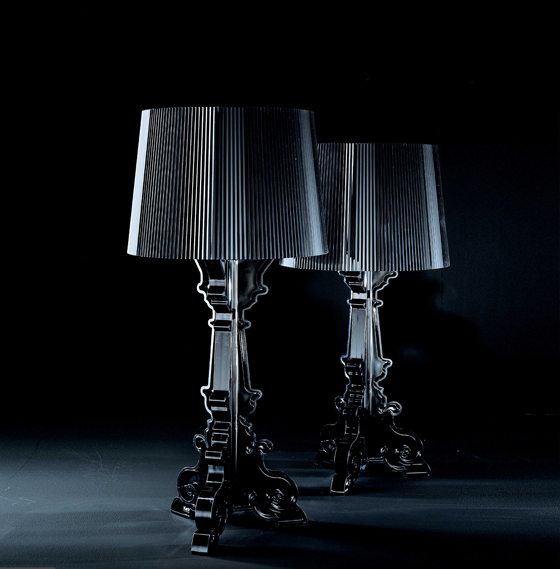
Then and now: Ferruccio Laviani's highly successful 'Bourgie' lamp for Kartell, which combines 18th-century formal references with 21st-century manufacturing technology
×So, that's the first 50 years. What about the next 50? How do you see the company evolving?
What I love is the great energy this company has. We work very hard on the future in two respects. First, the collection, because without it you have nothing. We make a great investment in this, launching new products month by month. In these times of crisis, we've never stopped. We've always kept a focus on the future. On the other hand, I work a lot on retail and the idea is to have our own retail spaces. We have more than 120 stores. We have 200 shop-in-shops and 400 partners, which are smaller spaces, and 2,000 retailers. We work a lot on the quality of our retailers, who we need as partners to bring our collection to the world. This is the work we're doing now and we have to stay focused on both. It's about evolving the collection with time, then bringing it to the market in the best possible way.
....







